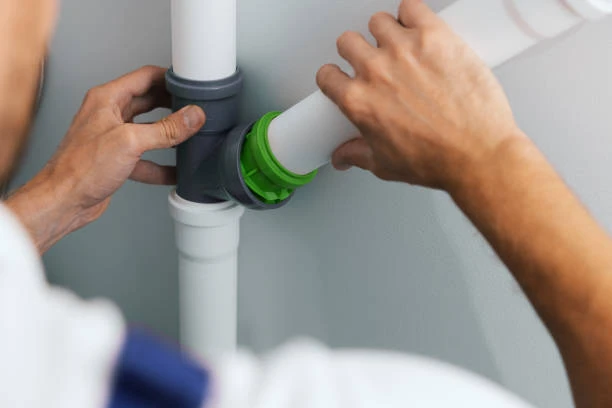Introduction
In today’s world, where sustainability is more than just a buzzword, materials that help reduce carbon footprints are in high demand. A recent report has highlighted that plastic pipe and fittings exhibit a lower carbon footprint compared to traditional pipe materials like steel and copper. This revelation has sparked conversations among engineers, builders, and environmentalists alike. But what does this mean for the future of construction and infrastructure? Let’s dive into the fascinating world of plastic pipes and fittings.
The Role of Pipes in Construction
Pipes are the lifelines of infrastructure. They are essential for transporting water, gas, and waste, making them indispensable in both residential and commercial settings. Traditional materials such as steel, copper, and concrete have been the go-to choices for decades, each with its own pros and cons. However, as environmental awareness grows, the search for more sustainable options intensifies.
What Are Plastic Pipes and Fittings?
Plastic pipe and fittings are made from synthetic materials and are designed for various applications, including plumbing, drainage, and irrigation. The most common types of plastic pipes include:
- PVC (Polyvinyl Chloride): Widely used for drainage and sewage systems.
- HDPE (High-Density Polyethylene): Known for its strength and resistance to corrosion, ideal for gas and water supply.
- PEX (Cross-Linked Polyethylene): Flexible and often used in residential plumbing.
Environmental Impact of Pipe Materials
When assessing the environmental impact of different pipe materials, carbon footprints are a critical measure. A carbon footprint refers to the total greenhouse gas emissions produced directly or indirectly by an individual, organization, or product.
Overview of Carbon Footprint Assessment
Evaluating a material’s carbon footprint involves analyzing its entire lifecycle—from extraction and manufacturing to installation and disposal. This comprehensive approach ensures a fair comparison among different materials.
Comparative Analysis of Carbon Footprints
Carbon Footprint of Traditional Materials
Steel and copper pipes require significant energy to produce, leading to higher carbon emissions. For instance, the extraction and processing of raw materials for steel production are highly energy-intensive processes.
Carbon Footprint of Plastic Pipes
Plastic pipes, on the other hand, generally have a lower carbon footprint. Their manufacturing processes consume less energy and produce fewer emissions. Moreover, advancements in recycling technology are helping to further reduce their environmental impact.
Lifecycle Analysis of Plastic Pipes
Understanding the lifecycle of plastic pipes is essential for a complete picture of their environmental impact.
Manufacturing Process
The production of plastic pipes typically requires less energy than traditional materials. The use of innovative techniques in manufacturing continues to minimize waste and emissions.
Installation and Maintenance
Plastic pipes are lightweight and easy to handle, which can lead to reduced transportation emissions and lower labor costs during installation. Additionally, they require minimal maintenance, further enhancing their sustainability credentials.
End-of-Life Considerations
One major concern with plastic is its disposability. However, many plastic pipes are now recyclable, reducing their impact on landfills and encouraging a circular economy.
Advantages of Plastic Pipes and Fittings
- Lightweight and Ease of Handling: Their light weight makes transportation and installation simpler and less energy-intensive.
- Resistance to Corrosion: Unlike metal pipes, plastic pipes won’t corrode or rust, extending their lifespan.
- Longevity and Durability: They can withstand extreme weather conditions, making them a reliable choice for various applications.
Economic Considerations
While the initial cost of plastic pipes may be similar to or slightly higher than traditional options, the long-term savings in maintenance and energy efficiency often outweigh these upfront costs. Additionally, lower labor costs during installation can make plastic pipes more attractive financially.
Regulatory and Industry Standards
As environmental concerns rise, industry standards are evolving. Regulations regarding the use of sustainable materials are becoming more stringent, pushing manufacturers to adapt and innovate.
Case Studies and Real-World Applications
Numerous cities and companies have begun incorporating plastic pipes into their infrastructure projects, citing benefits like cost savings and reduced environmental impact. Feedback from engineers and contractors often highlights the ease of installation and long-term reliability.
Challenges and Misconceptions
Despite their advantages, plastic pipes face some misconceptions regarding their durability and environmental impact. Addressing these myths is crucial for fostering acceptance and encouraging wider use.
Future of Plastic Pipes in Construction
With ongoing innovations in materials and manufacturing processes, the future of Plastic Pipe and Fittings looks promising. The demand for sustainable solutions in construction is expected to continue growing, and plastic pipes are well-positioned to meet this need.
Sustainability Initiatives
The industry is taking proactive steps to reduce carbon footprints. Initiatives focused on recycling and responsible sourcing are gaining momentum, positioning plastic pipes as a sustainable choice for future projects.

Conclusion
The findings from recent reports clearly indicate that plastic pipes and fittings have a lower carbon footprint compared to traditional materials like steel and copper. With their numerous advantages, including durability, resistance to corrosion, and ease of installation, plastic pipes are an excellent choice for sustainable construction. As the industry moves towards greener practices, it’s clear that plastic pipes will play a vital role in the future of infrastructure.
FAQs
- What types of plastic pipes are available?
- The most common types include PVC, HDPE, and PEX, each suitable for different applications.
- How do plastic pipes compare in durability to metal pipes?
- Plastic pipes are resistant to corrosion and can last just as long, if not longer, than metal pipes under many conditions.
- Are plastic pipes recyclable?
- Yes, many plastic pipes can be recycled, contributing to a circular economy.
- Do plastic pipes require more maintenance than traditional materials?
- No, plastic pipes typically require less maintenance due to their resistance to corrosion and scaling.
- What is the environmental impact of manufacturing plastic pipes?
- The manufacturing process for plastic pipes generally has a lower carbon footprint compared to traditional materials like steel and copper, especially with advancements in recycling technology.


















